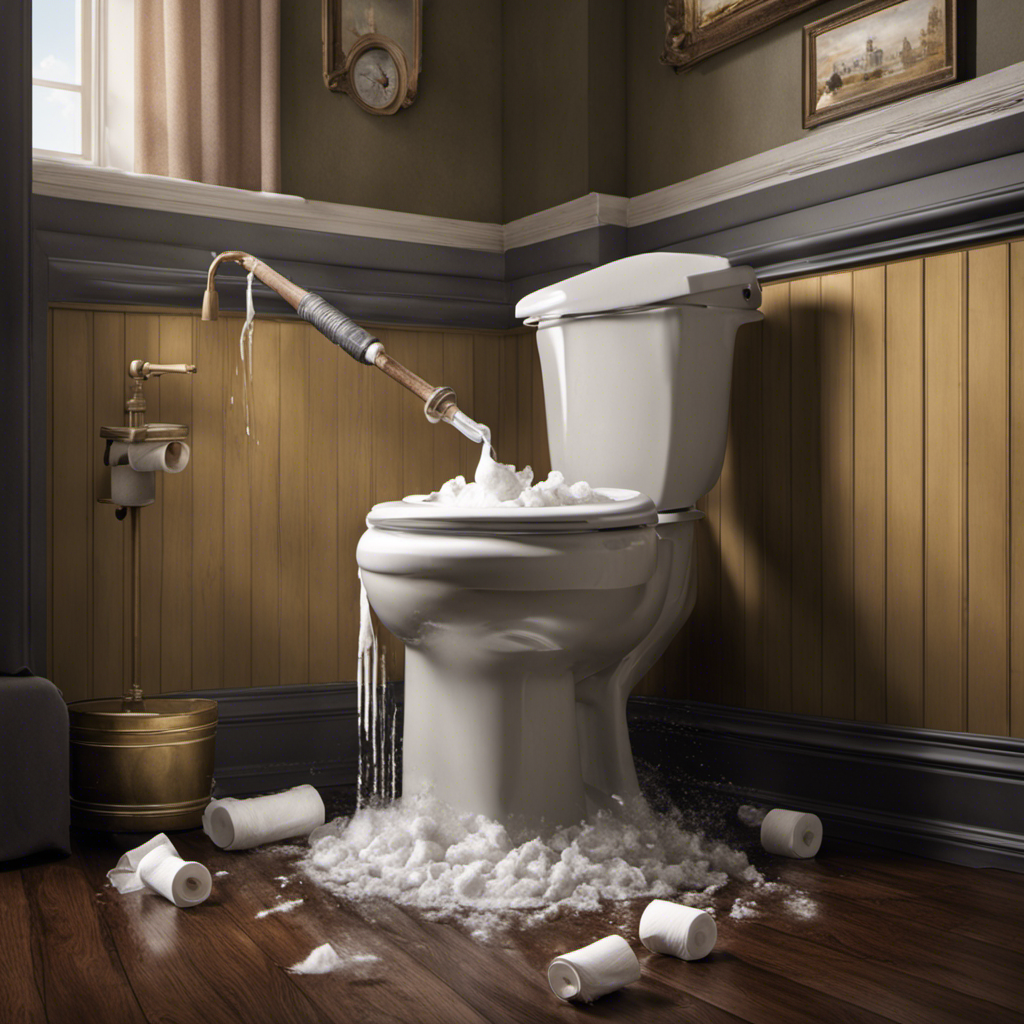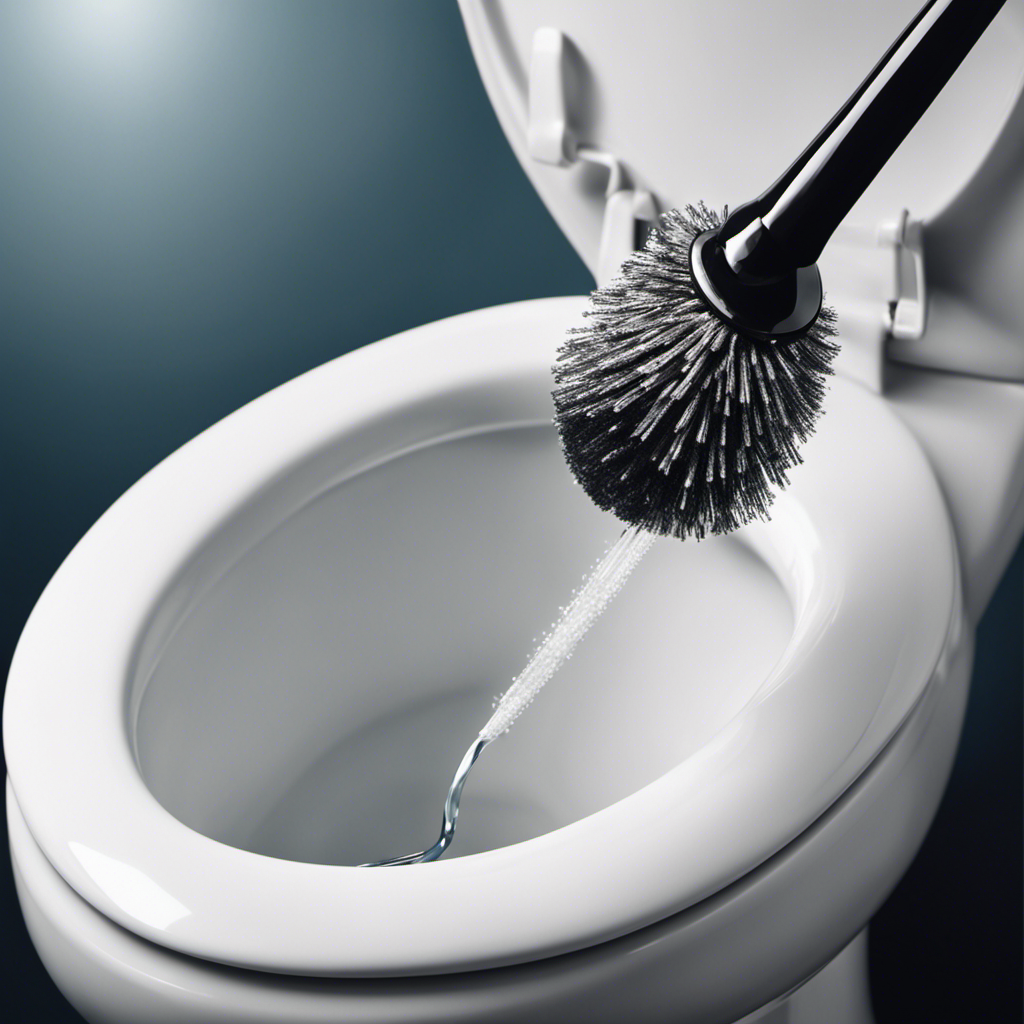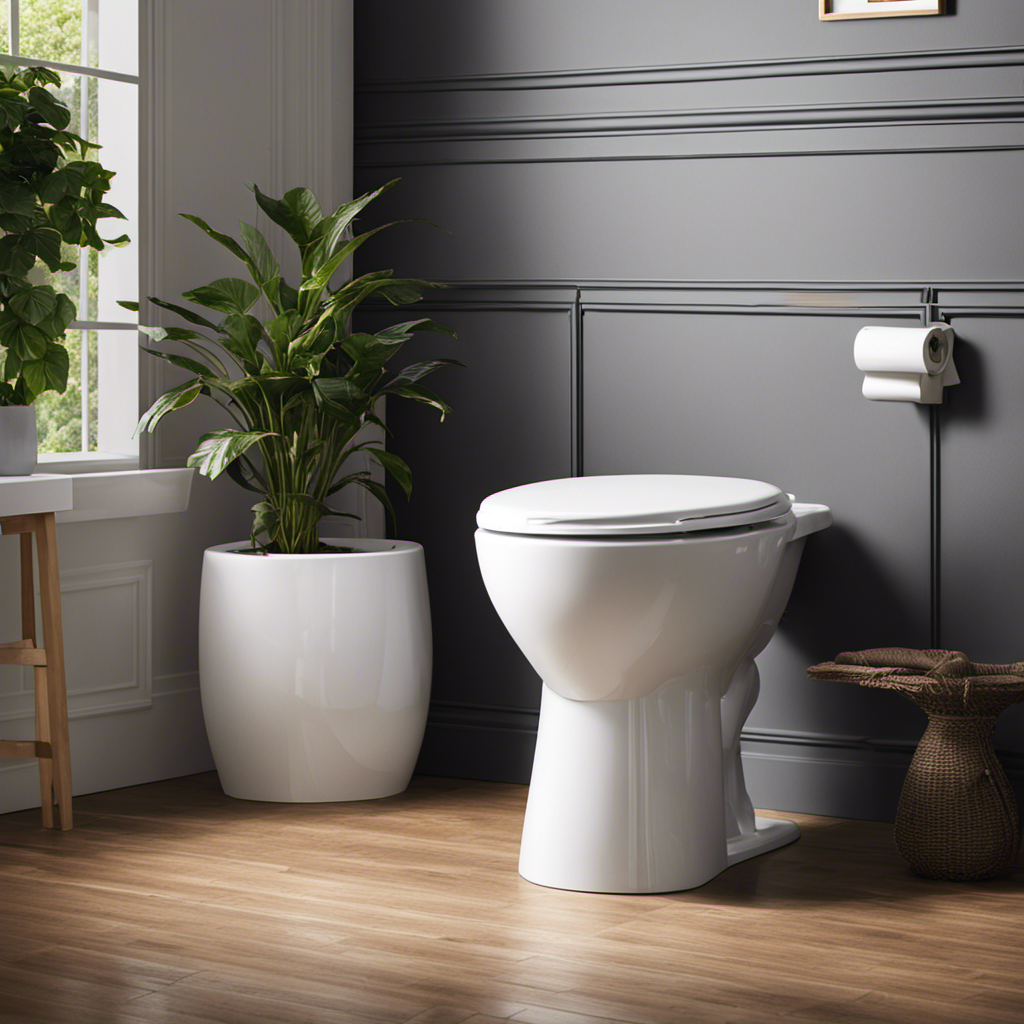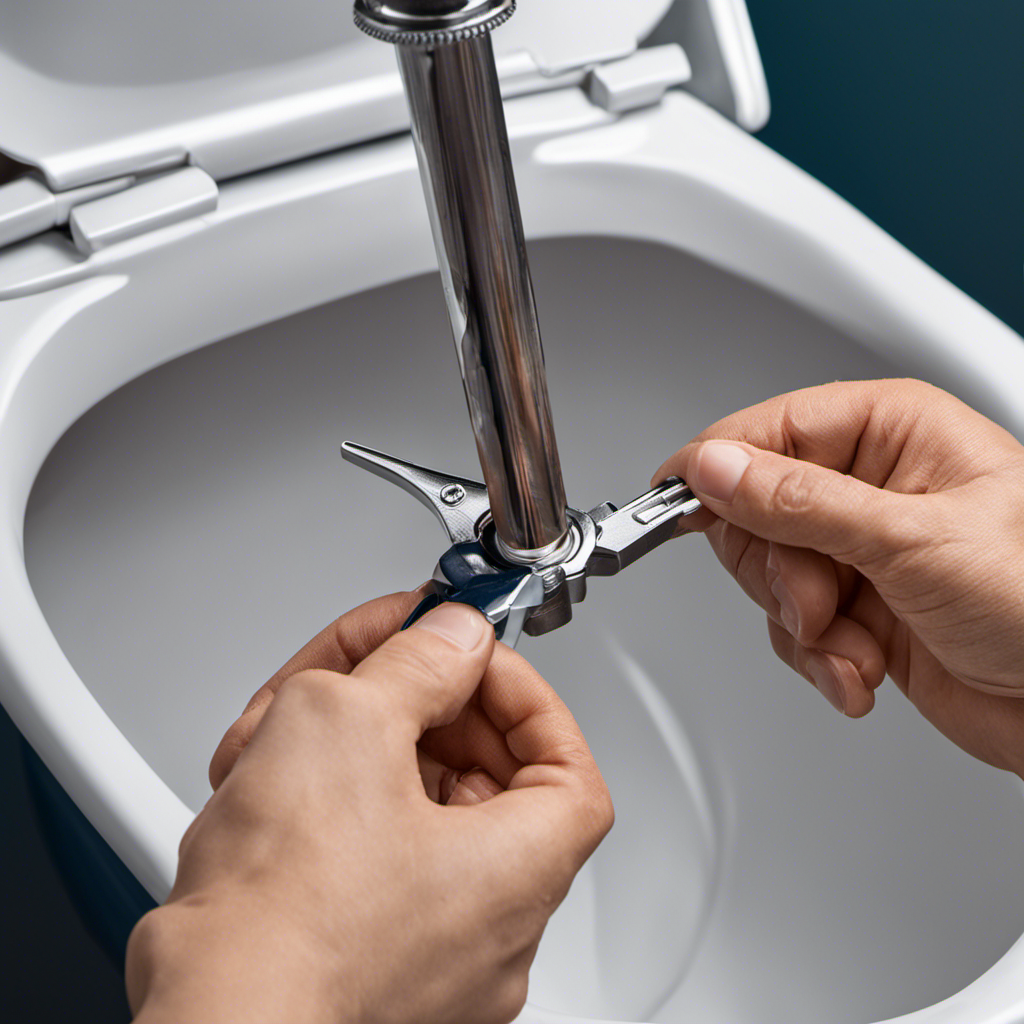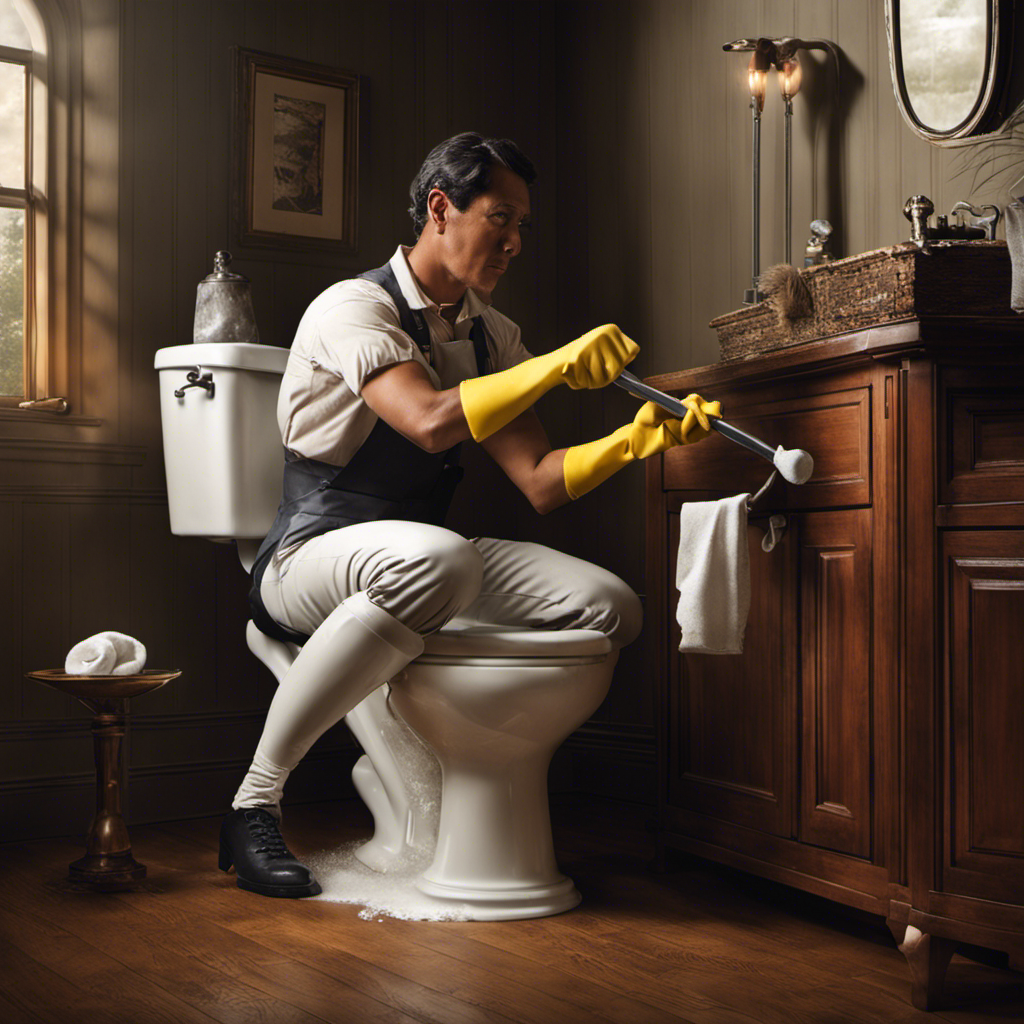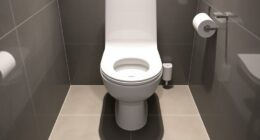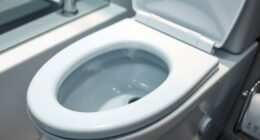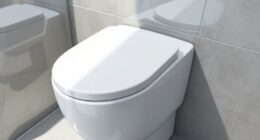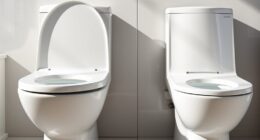Did you know that over 50% of households experience an overflowing toilet at some point? It’s not only frustrating but can also cause significant water damage if not fixed promptly.
In this article, I will guide you through the steps to fix a overflowing toilet quickly and effectively. By following these simple instructions, you’ll be able to stop the water flow, clear the blockage, and ensure proper functioning of your toilet in no time.
Let’s get started!
Key Takeaways
- Assess the situation and determine the cause of the overflowing toilet
- Stop the water flow and prevent further damage by locating and turning off the shut-off valve
- Clear the blockage using a plunger or consider using a toilet auger or chemical drain cleaner
- Check and adjust the float to ensure proper functioning and prevent future toilet overflow
Assess the Situation
First, you’ll need to check if the toilet bowl is overflowing. Evaluate the potential damage by assessing the amount of water on the floor and any signs of water damage to nearby walls or furniture.
Once you’ve determined the cause of the overflow, you can proceed with fixing the issue. Common causes include a clogged drain, a malfunctioning float valve, or a faulty fill valve.
To unclog the drain, you can use a plunger or a drain snake. If the float valve is the problem, adjusting the water level or replacing the valve may be necessary. If the fill valve is faulty, it will need to be replaced.
Remember to turn off the water supply before attempting any repairs to avoid further damage.
Stop the Water Flow
To stop the water flow, you’ll need to locate the shut-off valve and turn it clockwise. This valve is usually located behind or near the toilet. Once you’ve found it, simply turn it to the right until the water stops flowing. This is an important step in preventing any further damage or flooding in your bathroom.
Here are some preventive measures you can take to avoid future overflowing toilets:
- Regularly check the toilet for any leaks or cracks
- Avoid flushing excessive toilet paper or foreign objects
- Teach children proper toilet usage and discourage them from playing with the flush
- Consider installing a toilet overflow alarm
- Have a plunger handy for minor clogs
Clear the Blockage
Once you’ve located the blockage, you can use a plunger to try and clear it. Plunger techniques are effective for unclogging toilets and can save you from calling a professional.
To begin, make sure there is enough water in the toilet bowl to cover the plunger’s rubber cup. This creates a seal and helps with the suction. Place the plunger over the drain hole and firmly push down, then pull up quickly. Repeat this motion several times, maintaining a strong seal.
The pressure created by the plunger can dislodge the blockage and allow it to move through the pipes. If the blockage persists, you may need to try different drain cleaning methods such as using a toilet auger or a chemical drain cleaner.
Check and Adjust the Float
After locating the blockage and trying to clear it with a plunger, it is important to check and adjust the float in the toilet tank. The float is a small device that controls the water level in the tank. If it is not properly adjusted, it can lead to an overflowing toilet.
Here are some key steps to check and adjust the float for proper maintenance:
- Locate the float in the toilet tank.
- Check if the float is too high or too low.
- Adjust the float by bending the metal rod if it is too high.
- If the float is too low, adjust it by either bending the rod upwards or adjusting the screw on top of the float.
- Once adjusted, flush the toilet and observe if the water level stops at the desired level.
Test and Ensure Proper Functioning
Make sure to test and ensure that the float is functioning properly by flushing the toilet and observing the water level. This step is crucial in troubleshooting common toilet problems and preventing toilet overflow in the future.
When you flush the toilet, the float should rise with the water level and then stop the flow of water once it reaches the desired level. If the float is not working properly, it may not stop the water flow, resulting in an overflow.
To prevent this, check if the float is properly attached and adjust its position if necessary. Additionally, make sure there are no obstructions or debris that may interfere with the float’s movement.
Frequently Asked Questions
How Do I Prevent My Toilet From Overflowing in the First Place?
To prevent my toilet from overflowing, I should focus on toilet maintenance and follow troubleshooting tips. By taking regular care of the toilet and addressing any issues promptly, I can avoid the inconvenience and mess of an overflowing toilet.
Can I Use Chemicals to Clear a Blockage in My Toilet?
Yes, you can use chemicals to unclog a toilet, but it’s important to use them safely. However, there are alternative methods for unclogging toilets that may be more effective and less harmful to your plumbing.
What Do I Do if the Water Continues to Overflow After I Have Cleared the Blockage?
If the water continues to overflow after clearing a blockage, it’s crucial to take immediate action. Contact emergency plumber services to prevent further water damage and ensure a professional fix for the problem.
How Often Should I Check and Adjust the Float in My Toilet?
I check and adjust the float in my toilet regularly as part of my toilet maintenance routine. It ensures that the water level is regulated properly, preventing any potential overflow issues.
Are There Any Signs That Indicate a Problem With the Toilet’s Functioning Before It Overflows?
Common signs of a toilet problem before it overflows include slow draining, gurgling noises, and water rising in the bowl. To fix a clogged toilet before it overflows, try using a plunger or a toilet auger.
Conclusion
In conclusion, fixing an overflowing toilet can be a simple task if you follow these steps.
Assess the situation to determine the cause of the overflow, then stop the water flow by shutting off the valve.
Clear any blockages using a plunger or plumbing snake, and check and adjust the float if necessary.
Finally, test the toilet to ensure proper functioning.
Did you know that according to a survey, 95% of people have experienced a toilet overflow at least once in their lifetime? So, you’re not alone in dealing with this common plumbing issue.
